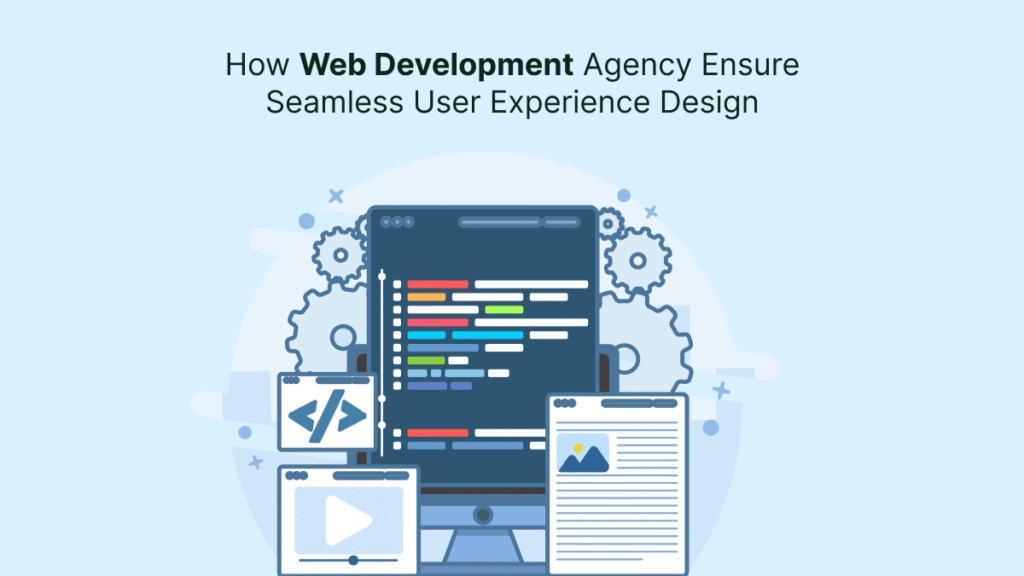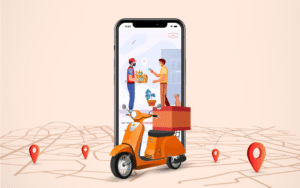
In today’s digital world, having a good-looking website isn’t enough. What truly matters is how users interact with it. A smooth and seamless user experience (UX) can make the difference between a one-time visitor and a loyal customer. This is where a web development agency plays a crucial role. They focus not just on building websites but also on making sure users enjoy using them. Let’s explore how they ensure seamless UX design.
Understanding User Needs
User Research and Analysis
A web development agency begins by understanding who the website is for. This involves researching the target audience—what they want, how they browse, and what frustrates them. Agencies use surveys, interviews, and analytics tools to gather this information.
Building User Personas
Once the data is collected, agencies create user personas. These are profiles that represent typical users. Personas help guide design choices to suit real users rather than assumptions.
Planning the User Journey
Mapping the Flow
A user journey map shows the steps a visitor takes from landing on the site to achieving their goal. Agencies outline this journey to make sure each step is smooth and logical.
Identifying Pain Points
Agencies look for areas where users may get confused or stuck. Fixing these issues early in the process ensures a better experience once the site is live.
Clear and Simple Design
Focus on Usability
Good UX design means users can navigate easily without confusion. Agencies keep layouts clean, buttons visible, and language simple. They avoid overloading pages with too much content.
Mobile Responsiveness
Since many users access websites from their phones, agencies ensure the design works well on all screen sizes. This includes adjusting layouts, font sizes, and interactive elements for touch use.
Fast Load Times
Optimizing Performance
A slow website can frustrate users. Agencies optimize images, use clean code, and minimize scripts to speed up load times. Fast websites keep users engaged and reduce bounce rates.
Consistent Branding and Design
Unified Visuals
A web development agency ensures that fonts, colors, icons, and layouts stay consistent across the site. This builds trust and creates a more professional appearance.
Familiar Navigation
Consistent menu placement and similar interaction patterns make it easier for users to explore different pages without confusion.
Accessibility for All Users
Inclusive Design
Agencies ensure the site can be used by people with disabilities. This includes screen reader compatibility, proper contrast for text, and keyboard navigation support.
Following Guidelines
They follow global standards like WCAG (Web Content Accessibility Guidelines) to make websites inclusive and usable for everyone.
Testing for Perfection
Usability Testing
Agencies run tests with real users to see how they interact with the site. Observing user behavior helps identify problems that may not be obvious during design.
A/B Testing
Different versions of pages are tested to see which one performs better. This helps in refining content, layout, and functionality.
Ongoing Improvements
Regular Updates
User behavior can change over time. Agencies monitor performance and make regular updates based on new trends or feedback to keep the experience fresh.
User Feedback
Collecting feedback directly from users helps agencies understand what’s working and what’s not. This guides future improvements.
Read more: Leading Web Development Company for Custom Web Design Services
Integration of Modern Technologies
Use of AI and Automation
Some agencies use AI to suggest improvements in layout or content based on user data. Chatbots, for example, enhance customer service by offering instant help.
Real-Time Interaction Features
Interactive elements like live chat, instant search, and personalized suggestions create a more engaging experience for users.
Collaborative Approach
Working with Clients
A seamless user experience is achieved through close collaboration between the agency and the client. Agencies involve clients in decision-making, ensuring the final product reflects the brand and goals.
Feedback Loops
Constant communication and feedback between developers, designers, and the client help catch issues early and make necessary adjustments.
Importance of Content Strategy
Clear Messaging
Agencies ensure that website content is clear, concise, and aligned with user intent. They help structure the content so users can find information easily.
Visual Content Integration
Using visuals like images, icons, and videos enhances understanding and makes the experience more enjoyable without overwhelming the user.
SEO and UX Together
User-Friendly URLs and Navigation
Agencies design sites that are not only good for users but also for search engines. Simple URLs, organized menus, and structured content help both.
Mobile-First Approach
With Google’s mobile-first indexing, agencies build websites keeping mobile usability as a priority, improving both search ranking and user satisfaction.
Conclusion
A web development agency does much more than just build websites. They carefully craft an experience that is smooth, enjoyable, and meets the user’s needs. From understanding the audience and planning the user journey to testing and constant updates, each step is taken to ensure the end product offers a seamless experience.
These agencies combine creativity, strategy, and technology to create websites that users love to interact with. Whether you’re launching a new site or improving an existing one, partnering with a skilled web development agency—or even a clone app development company—can make all the difference in achieving a standout user experience.
FAQs
What is the role of a web development agency in UX design?
A web development agency ensures that a website is easy to use, visually appealing, and meets the user’s expectations through smart design and functionality.
How do agencies make sure a website is user-friendly?
They conduct research, test with real users, and follow design principles that make navigation and interaction simple and intuitive.
Why is mobile responsiveness so important in UX?
Most users access websites through mobile devices. A mobile-friendly site ensures a smooth experience regardless of screen size.
What is the difference between UI and UX?
UI (User Interface) is about how the website looks. UX (User Experience) is about how the website works and feels for the user.
How often should a website’s UX be updated?
UX should be reviewed regularly, especially when user behavior changes, new features are added, or feedback shows areas of improvement.





